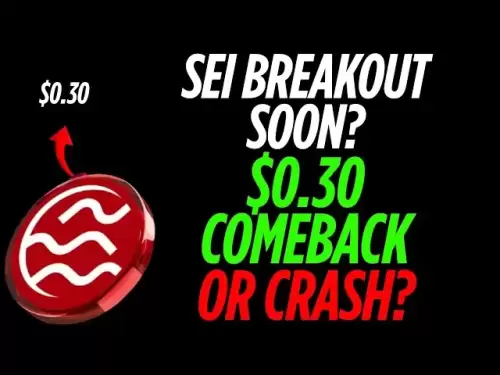-
 Bitcoin
Bitcoin $109,583.2239
0.19% -
 Ethereum
Ethereum $2,583.4612
0.48% -
 Tether USDt
Tether USDt $1.0003
-0.04% -
 XRP
XRP $2.2681
0.70% -
 BNB
BNB $659.9218
-0.52% -
 Solana
Solana $151.4961
-0.37% -
 USDC
USDC $0.9999
-0.02% -
 TRON
TRON $0.2861
1.20% -
 Dogecoin
Dogecoin $0.1718
0.04% -
 Cardano
Cardano $0.5960
-0.07% -
 Hyperliquid
Hyperliquid $40.1233
2.85% -
 Sui
Sui $2.9974
2.48% -
 Bitcoin Cash
Bitcoin Cash $497.1279
-1.76% -
 Chainlink
Chainlink $13.7275
-0.22% -
 UNUS SED LEO
UNUS SED LEO $9.0241
0.70% -
 Avalanche
Avalanche $18.5536
-0.88% -
 Stellar
Stellar $0.2421
1.39% -
 Toncoin
Toncoin $2.8593
-0.51% -
 Shiba Inu
Shiba Inu $0.0...01187
-0.07% -
 Litecoin
Litecoin $90.0023
2.90% -
 Hedera
Hedera $0.1590
2.79% -
 Monero
Monero $322.1495
0.00% -
 Polkadot
Polkadot $3.5453
-1.00% -
 Dai
Dai $1.0000
-0.01% -
 Bitget Token
Bitget Token $4.5733
-1.06% -
 Ethena USDe
Ethena USDe $1.0002
-0.01% -
 Uniswap
Uniswap $7.6345
3.03% -
 Aave
Aave $279.2583
0.47% -
 Pepe
Pepe $0.0...01003
-1.52% -
 Pi
Pi $0.4941
-0.32%
What do you think about the 5-day average volume line crossing the 60-day average volume line but the price is stagnant?
A 5-day volume crossover above the 60-day average with stagnant price may signal accumulation, distribution, or anticipation of a catalyst.
Jul 03, 2025 at 10:49 pm
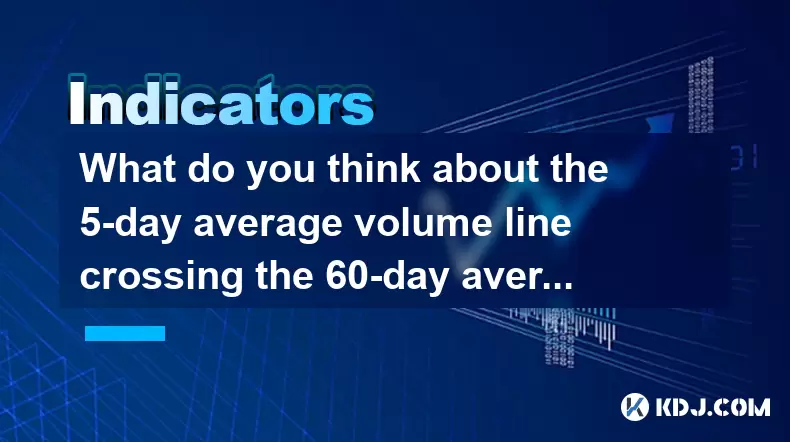
Understanding the 5-Day and 60-Day Average Volume Lines
In technical analysis, volume is often considered a leading indicator of price movement. The 5-day average volume line represents the average trading volume over the past five days, while the 60-day average volume line reflects the average volume over the last two months. When the 5-day average volume crosses above the 60-day average volume, it signals an increase in recent buying or selling pressure.
This crossover can indicate that traders are becoming more active, even if the price remains unchanged. It's important to understand that volume often precedes price, meaning changes in volume can predict future price movements before they occur. However, when this occurs without a corresponding shift in price, it may suggest a tug-of-war between buyers and sellers.
Interpreting Volume Crossover with Stagnant Price
A situation where the 5-day average volume line crosses above the 60-day average volume line but the price remains stagnant can be interpreted in several ways. One possibility is that there is increased interest in the asset, but neither bulls nor bears have gained control. This could result in a consolidation phase, where traders are accumulating or distributing positions without triggering a breakout.
Another interpretation involves the presence of smart money activity. Large institutional players might be entering or exiting positions gradually to avoid spiking the price too early. In such cases, volume increases without price movement, as these entities absorb orders at specific price levels.
It’s also possible that the market is waiting for a catalyst—such as news, regulatory developments, or macroeconomic events—to push the price in one direction. Until then, the increased volume indicates anticipation or uncertainty among traders.
How to Analyze This Scenario on a Chart
To analyze this scenario effectively, you should:
- Open your preferred charting platform (e.g., TradingView or Binance’s native tools).
- Add both the 5-day average volume and 60-day average volume indicators.
- Observe whether the shorter-term volume line crosses above the longer-term line.
- Simultaneously monitor the price action to see if it confirms the volume signal.
If the price does not move significantly, zoom into smaller timeframes (like 1-hour or 4-hour charts) to detect hidden patterns. Look for candlestick formations, support/resistance zones, or other volume anomalies that may offer clues about potential breakouts.
Additionally, consider using on-chain analytics tools like Glassnode or CryptoQuant to cross-reference volume data with metrics such as exchange inflows/outflows or whale activity.
Possible Implications in Different Market Phases
The implications of a volume crossover during price stagnation can vary depending on the broader market context:
During a downtrend: A rising short-term volume average might indicate accumulation by strong hands. If the price fails to drop despite increasing volume, it could mean sellers are exhausting their positions.
During an uptrend: If the price stalls after a rally while volume picks up, it might signal profit-taking or distribution by large holders. This can lead to either a continuation or reversal, depending on subsequent candle behavior.
In a sideways market: Increased volume without price movement may point to a buildup phase. Traders are likely testing key support and resistance levels, preparing for a potential breakout.
Each of these scenarios requires close monitoring of order book depth and trade imbalances. Tools like order book heatmaps or depth charts can help visualize whether buy walls or sell walls are forming around current prices.
What Should Traders Do?
Traders facing this situation should adopt a cautious yet observant approach. Here are actionable steps:
- Avoid making impulsive trades based solely on volume crossovers.
- Wait for confirmation from other indicators such as moving averages, RSI divergence, or MACD crossovers.
- Monitor liquidity pockets on the order book to identify where large orders are placed.
- Set up alerts for significant volume spikes or sudden drops in open interest.
- Use trailing stop-losses if entering early based on volume signs, especially in volatile crypto markets.
Also, consider the timeframe you're analyzing. Short-term traders might interpret this differently than long-term investors. For example, a swing trader might look for a breakout within hours, whereas a position trader may wait for multiple confirmations across days.
Frequently Asked Questions
Q: Can volume increase without price movement in crypto?
Yes, volume can rise without immediate price movement. This often happens during accumulation or distribution phases, where large players execute trades without triggering volatility.
Q: Does a 5-day volume crossover always signal a trend change?
No, not necessarily. While it can be a precursor to a trend change, it must be confirmed by other technical or fundamental signals before being acted upon.
Q: How do I differentiate between bullish and bearish volume buildup?
Look at the close-to-open price relationship and candle wicks. If most candles close near their highs despite high volume, it leans bullish. Conversely, if closes are near lows, it may indicate bearish dominance.
Q: Should I rely solely on volume indicators for trading decisions?
It’s generally unwise to base decisions solely on volume. Combine it with price action, order flow, and sentiment indicators to build a robust trading strategy.
Disclaimer:info@kdj.com
The information provided is not trading advice. kdj.com does not assume any responsibility for any investments made based on the information provided in this article. Cryptocurrencies are highly volatile and it is highly recommended that you invest with caution after thorough research!
If you believe that the content used on this website infringes your copyright, please contact us immediately (info@kdj.com) and we will delete it promptly.
- BONK Price Prediction: Meme Coin Mania and What's Next?
- 2025-07-04 12:30:13
- NYAG, Stablecoins, and FDIC Protections: Navigating the Regulatory Maze
- 2025-07-04 13:10:15
- Level Up Your DeFi Game: Phantom Wallet and the Ultimate DeFi Experience
- 2025-07-04 13:10:15
- Bitcoin Surge: Breaking Down the $109,000 Barrier and the Road to $165,000?
- 2025-07-04 12:30:13
- Solana ETF Inflows & Snorter Token: A New Era for Meme Coin Trading?
- 2025-07-04 12:50:12
- Ripple, Stablecoin, and First Bank: Decoding the Latest Moves in Crypto
- 2025-07-04 12:50:12
Related knowledge
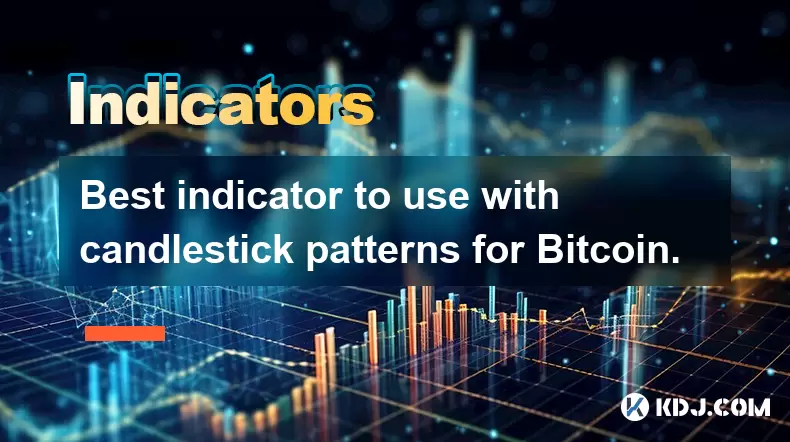
Best indicator to use with candlestick patterns for Bitcoin.
Jul 04,2025 at 12:36pm
Understanding the Role of Indicators with Candlestick PatternsIn the world of cryptocurrency trading, especially when dealing with Bitcoin, technical analysis plays a crucial role in identifying potential price movements. Traders often rely on candlestick patterns to forecast market behavior. However, these patterns alone may not always provide sufficie...
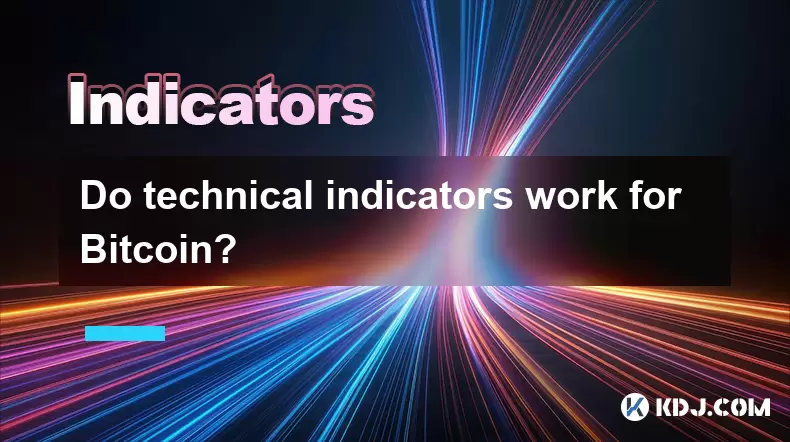
Do technical indicators work for Bitcoin?
Jul 04,2025 at 02:14pm
Understanding Technical Indicators in CryptocurrencyTechnical indicators are mathematical calculations based on historical price, volume, or open interest data used to forecast future price movements. In the context of Bitcoin, these tools are widely adopted by traders aiming to identify trends, reversals, and potential entry or exit points. While some ...
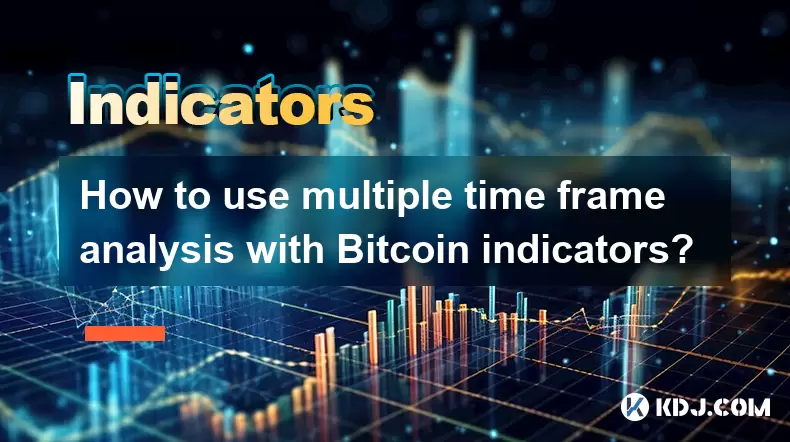
How to use multiple time frame analysis with Bitcoin indicators?
Jul 04,2025 at 11:14am
Understanding Multiple Time Frame Analysis in Bitcoin TradingMultiple time frame analysis is a strategy used by traders to gain a comprehensive view of market trends and price movements. In the context of Bitcoin trading, this method involves analyzing the same asset across different time intervals—such as 1-hour, 4-hour, daily, or weekly charts—to iden...
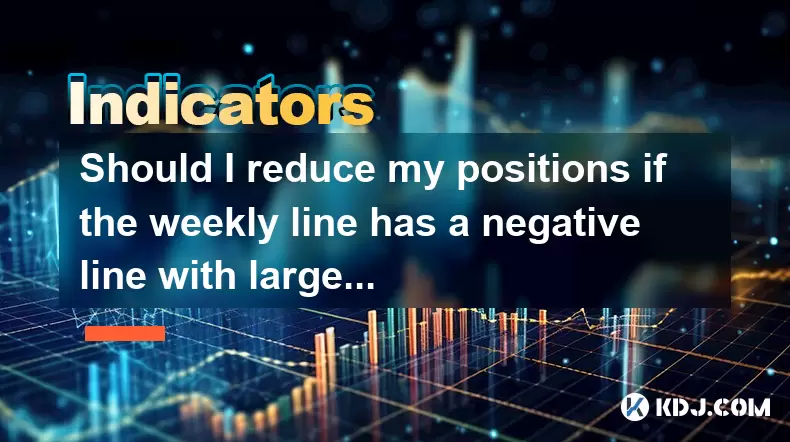
Should I reduce my positions if the weekly line has a negative line with large volume + the daily line falls below the middle Bollinger line?
Jul 01,2025 at 10:50pm
Understanding the Weekly Line with Negative Candle and Large VolumeWhen analyzing cryptocurrency charts, a weekly line that forms a negative candle accompanied by large volume is often interpreted as a strong bearish signal. This pattern suggests that institutional or large traders are actively selling their positions, which can foreshadow further price...
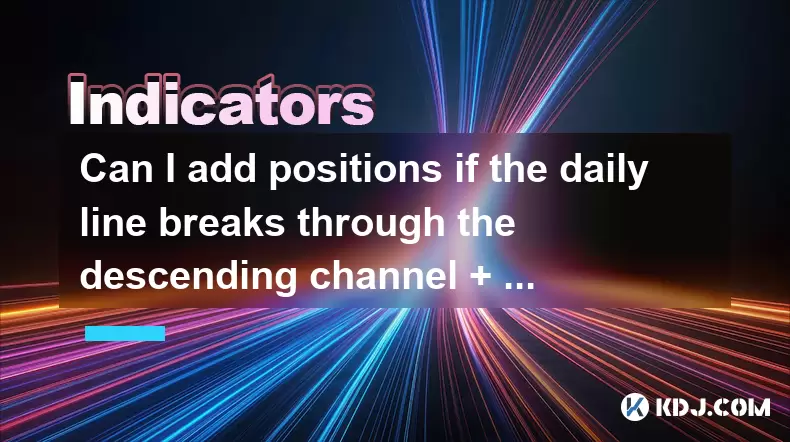
Can I add positions if the daily line breaks through the descending channel + the 30-minute moving average is in a bullish arrangement?
Jun 30,2025 at 11:00pm
Understanding the Descending Channel BreakoutWhen a daily line breaks through a descending channel, it indicates a potential shift in market sentiment from bearish to bullish. A descending channel is formed by drawing two parallel trendlines, where the upper trendline connects the lower highs and the lower trendline connects the lower lows. A breakout o...
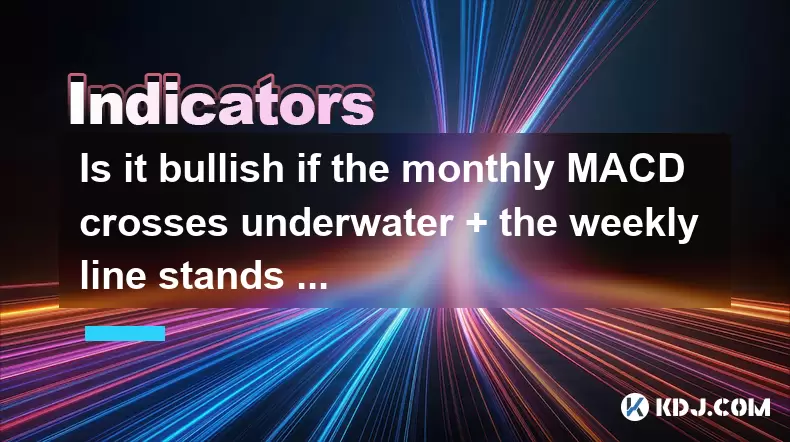
Is it bullish if the monthly MACD crosses underwater + the weekly line stands above the 60-week moving average?
Jul 04,2025 at 11:08am
Understanding the MACD Indicator in Cryptocurrency TradingThe Moving Average Convergence Divergence (MACD) is a popular technical analysis tool used by traders to identify potential trend reversals and momentum shifts. In the context of cryptocurrency trading, where volatility is high and trends can change rapidly, understanding how to interpret the MAC...

Best indicator to use with candlestick patterns for Bitcoin.
Jul 04,2025 at 12:36pm
Understanding the Role of Indicators with Candlestick PatternsIn the world of cryptocurrency trading, especially when dealing with Bitcoin, technical analysis plays a crucial role in identifying potential price movements. Traders often rely on candlestick patterns to forecast market behavior. However, these patterns alone may not always provide sufficie...

Do technical indicators work for Bitcoin?
Jul 04,2025 at 02:14pm
Understanding Technical Indicators in CryptocurrencyTechnical indicators are mathematical calculations based on historical price, volume, or open interest data used to forecast future price movements. In the context of Bitcoin, these tools are widely adopted by traders aiming to identify trends, reversals, and potential entry or exit points. While some ...

How to use multiple time frame analysis with Bitcoin indicators?
Jul 04,2025 at 11:14am
Understanding Multiple Time Frame Analysis in Bitcoin TradingMultiple time frame analysis is a strategy used by traders to gain a comprehensive view of market trends and price movements. In the context of Bitcoin trading, this method involves analyzing the same asset across different time intervals—such as 1-hour, 4-hour, daily, or weekly charts—to iden...

Should I reduce my positions if the weekly line has a negative line with large volume + the daily line falls below the middle Bollinger line?
Jul 01,2025 at 10:50pm
Understanding the Weekly Line with Negative Candle and Large VolumeWhen analyzing cryptocurrency charts, a weekly line that forms a negative candle accompanied by large volume is often interpreted as a strong bearish signal. This pattern suggests that institutional or large traders are actively selling their positions, which can foreshadow further price...

Can I add positions if the daily line breaks through the descending channel + the 30-minute moving average is in a bullish arrangement?
Jun 30,2025 at 11:00pm
Understanding the Descending Channel BreakoutWhen a daily line breaks through a descending channel, it indicates a potential shift in market sentiment from bearish to bullish. A descending channel is formed by drawing two parallel trendlines, where the upper trendline connects the lower highs and the lower trendline connects the lower lows. A breakout o...

Is it bullish if the monthly MACD crosses underwater + the weekly line stands above the 60-week moving average?
Jul 04,2025 at 11:08am
Understanding the MACD Indicator in Cryptocurrency TradingThe Moving Average Convergence Divergence (MACD) is a popular technical analysis tool used by traders to identify potential trend reversals and momentum shifts. In the context of cryptocurrency trading, where volatility is high and trends can change rapidly, understanding how to interpret the MAC...
See all articles























